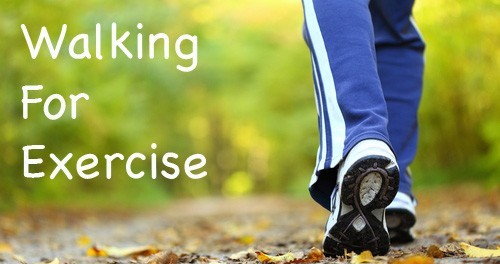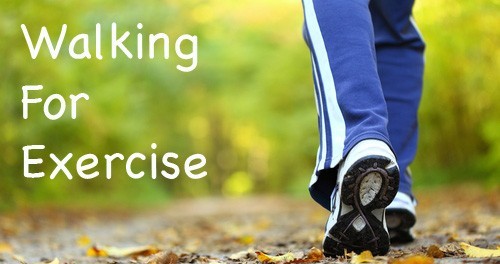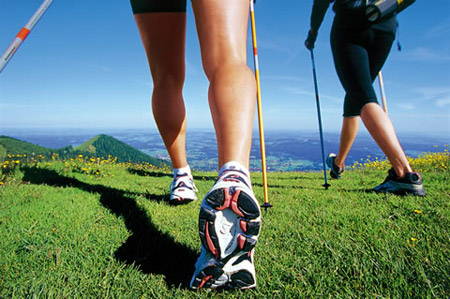Walk Talk Series
Day 19 – Water Bottles and Packs
What Do You Take With You?
What do you take with you when you walk? Is your pack weighted down so you are prepared for anything? Or do you head out the door with just your key? What is it that you never leave home without?
- 25-45 minute walk at a comfortable pace, concentrating on your walking form
- Warm up with 5 minutes at a very easy pace
- Stretching 5 minutes
- Now resume your walk at a comfortable pace
- Good posture
- Use your arms
- Strike with your heel and roll through each step, pushing off with your toe
- Stride is longer in back than in front
- End with 5 minutes of gentle stretching
Advanced walkers: Try this Anaerobic Threshold Walk
When to do the Anaerobic Threshold Walk
When May do this workout 1-3 times per week, alternating with an easier walk day or a rest day.
Benefits
Increases your athletic performance by bringing your body up to the anaerobic threshold. It is used by race-walkers to improve their VO2 maximum(the highest amount of oxygen one can consume during exercise). Improves endurance at speed.
Anaerobic Threshold Walk
- Start at an easy pace for 5-10 minutes
- Stop and do a stretching and flexibility routine for 5 minutes
- Continue, walking at a pace that brings your heartrate up to 80-92% of MHR for no more than 50 minutes. You can also use the variation below
- This is a fast pace where you are breathing very hard and can only speak in short phrases
- End with 5 minutes of gentle stretching and flexibility exercises.
Variation (After warm up and stretching) Threshold Workout
- Speed Walk fast for 8 minutes or 1 kilometer at 85-92% of your max heart rate
- Then slow down to an easy pace for 2 minutes
- Repeat this for 3-4 repetitions
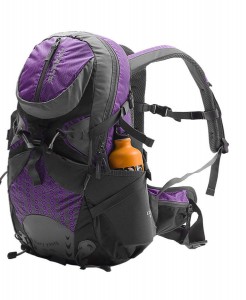
Packs and Water Bottles & Essentials
Wandering with a knapsack on your back is great for longer walks, but for shorter excursions you probably want to go lighter. Waist-packs of every kind are available everywhere. Look for one that will accommodate a water bottle. You should be drinking a cup of water each mile, and often times there is no drinking fountain or it may be shut off in the winter. Taking along your own water ensures that you don’t get dehydrated.
If you have enough pockets, you may not need a pack, but a pack is a great way to carry the rest of your walking essentials and non-essentials. A good pack distributes the weight load evenly across your body at the center of mass – your hips. Avoid purses or other options that put the load on just one shoulder, or you risk throwing off your body alignment and eventually developing problems and pain.
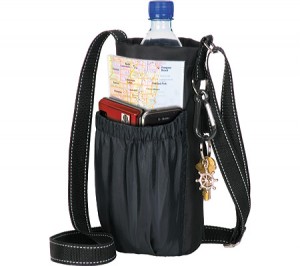 Here are some suggestions of what you can bring with you on your walk:
Here are some suggestions of what you can bring with you on your walk:
- Backpack: A backpack gives you lots of storage space, but it is a trade-off for weight and comfort. Look for a pack that is the right size for your needs and has comfortable straps. With larger packs, look for a belly strap to take the weight off your shoulders. An external water bottle holder and small zippered compartment are good features.
- Waist-pack: Most walkers can make due with a waist-pack. The variety of sizes and features is huge. Visit your local outdoors store or sporting goods store to see the selection. Larger variations may have a built-in water pouch or water bottle holder and straps to strap your jacket onto when you have warmed up.
- Walking Wallet/Neck Pouch: If you just want to carry your identification and some small items, these hang from a cord you can adjust with a slide to keep it close to your body across one shoulder or at your waist.
- Wrist/shoe wallet: Look in the running shoe stores for these items, a handy way to carry just a key or a couple of dollars to get you by on a walk, when pockets are not enough.
Walking Essentials: Water
Thou shalt drink – before, during, and after walking. Your comfort and stamina depends on getting enough water while walking. You need to drink every half hour if walking at a moderate pace, more often if you are sweating it. You should let thirst be your guide – but make sure you have water available as soon as you feel thirsty. That will mean having a route with lots of water drinking options, or carrying water with you.
Plan your route: Include a water stop on your regular walking route. Know where to find drinking fountains and if they are turned off during winter. You should be drinking a pint (500 mL) every hour, can you get that from slurping at a fountain or do you need to carry water?
Bottle holder: The best way to carry water is in a pack. Get a waistpack with an external bottle holder to be able to get to your water quickly. Balance the load in the pack or get one that carries the bottle in the middle of your back to preserve your body alignment.
Camel-back/built in systems: These gizmos allow you to carry water on your back, with a plastic tube straw to take a drink whenever you need. They balance the load well. Some waistpacks have a similar water pouch built in.
Water bottles: If you buy water, use those bottles only once and recycle them, they are not meant for re-use. To re-use a bottle, buy a good water bottle at a sporting goods shop. These have a higher grade of plastic that won’t leach into the water on re-use.
Round or flat?: The traditional water bottle is round and fits well in an external holder, but you may want to have one that will fit into your waist-pack comfortably. Look for a platypus water bottle, which is a flat pouch that will stuff well into your waist-pack.
Safe water sources: Never drink from a stream unless you filter or sterilize the water first. Most running water sources are contaminated with parasites and germs that will make you sick. That sparkling mountain stream is filled with Giardia, a very cute little smiling flagellate just waiting to infest your gut and liver.
Keep your water bottle clean.
Wash it after each use with soap and water, or add a couple of drops of bleach and fill it with water overnight, then rinse thoroughly in the morning. Don’t share your water bottle with anyone you wouldn’t exchange a sloppy kiss with.
Sun Protection
Your skin needs protection in order to prevent skin cancer, wrinkles, and burn. Never leave home without wearing sunscreen even on cloudy days. OK, maybe not at night. An outdoor walker gets lots of exposure to sun and wind, you need to reduce that consistently.
- Choose a waterproof sunscreen of SPF 15 or higher.
- Apply the sunscreen a half hour before your walk so it will absorb into the skin to start its protection.
- Put it on thickly – most people use too little and do not get the protection they paid for.
- Don’t forget your ears and any bald spot you don’t cover with a hat
- Protect your lips with lip sunblock.
- Reapply your sunscreen if you have been sweating or are out for a longer duration.
- Mosquitoes bugging you? Buy sunscreen that include repellent.
- Your hat and clothing are also a good line of defense against the sun. Cover as much as is comfortable with loose, breathable clothing.
- Sunglasses: choose glasses that give both UVA and UVB protection.
ID and Money
Don’t leave home without carrying some identification. If you have an accident or medical emergency, it can save a lot of grief. It is a very good idea to carry a health information card listing your name, address, phone, emergency contacts, important health conditions
Good-to-Have Non-Essentials
- Cell Phone: Some people would make this their first essential.
- First Aid: For a longer walk it’s smart to carry along a “blister kit.”
- Whistle: Essential if hiking in the woods and useful if walking in town.
- Snack: If you’re going to be walking for more than an hour, take along a snack to give you energy.
- Stick: Can be useful in dissuading muggers as well as providing hiking stability.
Nutrition: Vegetarian Meals
A vegetarian diet can be lower in fat and higher in vitamins and fiber than a meat-based diet. With proper attention to getting enough protein, it is a good choice. While you are experimenting with your diet, try some vegetarian days. At least it may introduce you to some new foods and dishes.

